#+stoneware illustration
Explore tagged Tumblr posts
Text

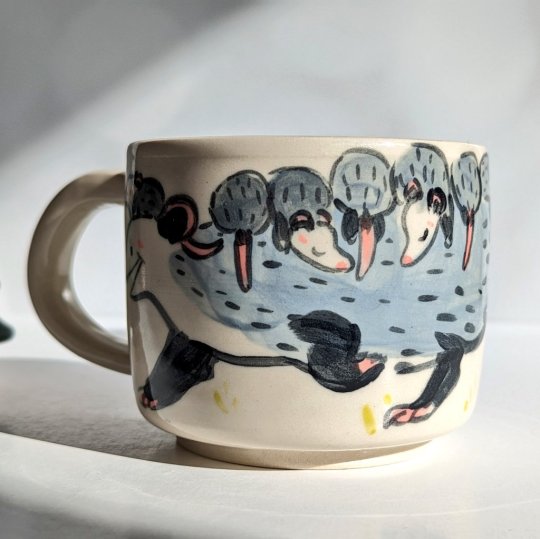

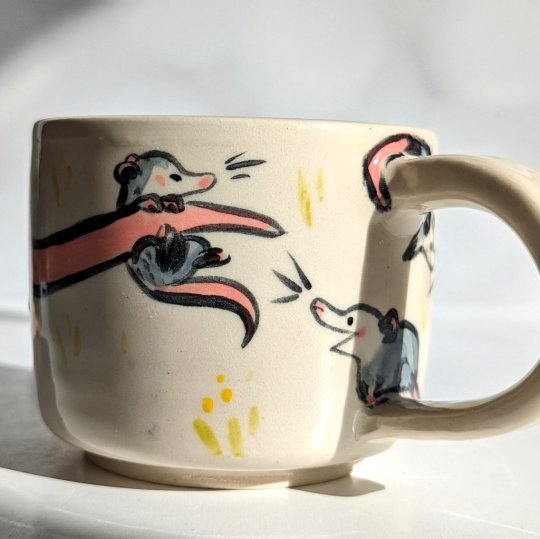
1 mug, 11 opossums
#ceramics#cute#artoftheday#handmade#pottery#art#illustration#opossum#opossums#stoneware#mug collection#mugshot#coffee mug#mugs#mug
1K notes
·
View notes
Text
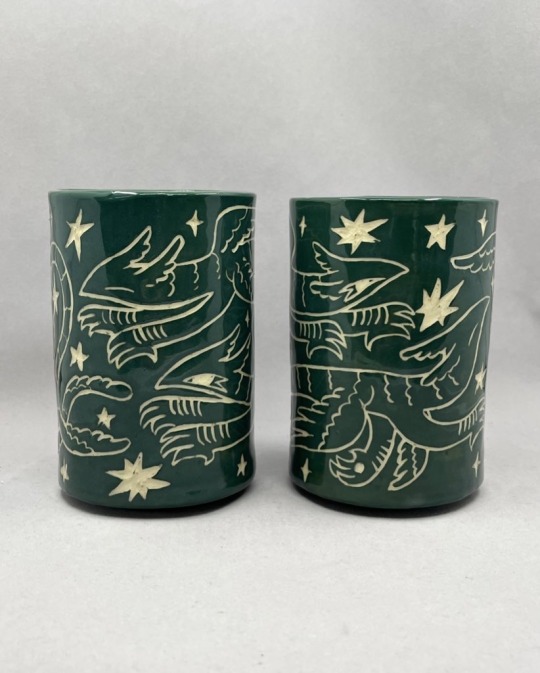
custom pair of cups, cone 6 stoneware
442 notes
·
View notes
Text


The first batch of slip-trailed stoneware crocks I worked on at my job have made it out of the salt kiln! The potters made the vessels on the wheel and handed them off to me to design!
#art tag#digital art#art#illustration#artists on tumblr#drawing#artwork#original character#ceramic#ceramic art#ceramics#pottery#crock#slip trail#stoneware#salt glaze#fish#deer#chrysanthemum#my art#i swear i wont just talk about my job all the time but im so pleased to see my stuff make it out in one peice!#if you guys want these you can buy them at the giftshops. they are officially out of my hands
227 notes
·
View notes
Text

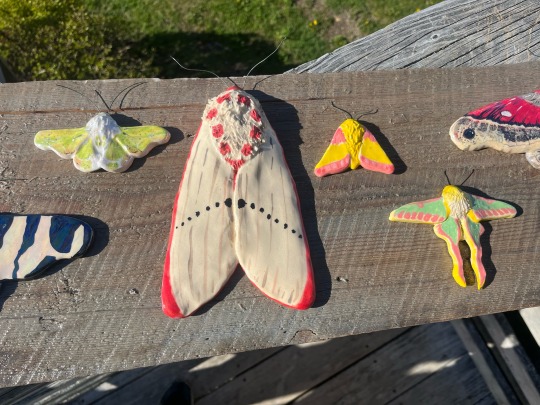

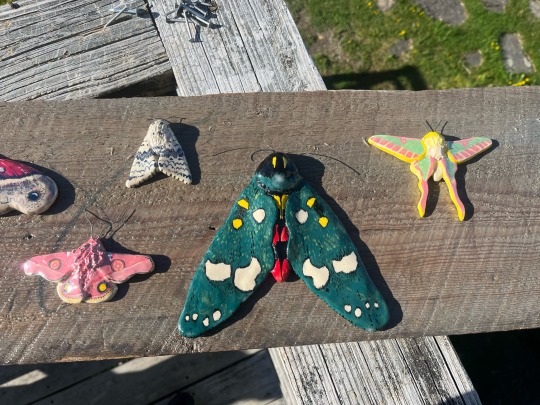
All the moths that I made for the Maine Pottery tour! Already have the brain wheels moving about new ones ( ・∇・)
#hyydraworks#cute#ceramics#pottery#traditional art#illustration#moth#wall art#insect#cute animal#stoneware#handmade#figurine
521 notes
·
View notes
Text



self portraits on a teapot 2021
120 notes
·
View notes
Text

















HANDWERK ANNA VOSS
Keramik - Kunsthandwerk im Ausland.
Work and travel with Erasmus+.
Nexø, Bornholm.
Collecting tons of beautiful experiences at https://bornholmskeramikfabrik.dk/ in 2023. Illustration + pottery
1 note
·
View note
Text



🟨 Your Embrace 🟨
cone 5.5 stoneware wall tiles, underglaze, underglaze pencil, glaze
- - -
id: Three ceramic wall tiles with a yellow background and black and white illustrations and floral accents featuring pairs of various werewolves embracing, at peace with closed eyes.
The first tile: a fat figure with top surgery and phalloplasty scars touching noses with a trans masc figure with breasts, arms wrapped around each other.
Second tile: A trans femme figure with its head resting over another figure with breasts, holding hands, arms around each other, legs intertwined.
Third tile: A sitting figure with top surgery scars resting its head on the shoulder of the companion sitting behind it. The companion’s arms reach around it in a hug.
#ceramics#illlustration#werewolves#lgbt#lgbtq#lgbtqia#queer#queer art#transgender#nonbinary#trans art#trans artist#this and other exhibition work i’ve shared will be for sale about next week!
7K notes
·
View notes
Photo


Illustrated Picnic Bowls, wheel thrown stoneware by LPIbanezStudio
118 notes
·
View notes
Text

Goat Kid Bowl by @kness
A lovely speckled stoneware bowl illustrated with several goat kids and flowers. This handmade bowl is food-safe thanks to a lovely strawberry and cream glaze inside. 5 inches wide, 3 inches tall.
Fill your dashboard with boundless joy and good art by simply following @kness immediately.
22 notes
·
View notes
Text
i want start selling my art in some way, so im wondering what people would be most interested in
this isn't a "I would be interested in buying" poll btw, I just want to know what I should start with, so even if you aren't planning on buying anything, consider putting an answer in :]
16 notes
·
View notes
Photo

RARE OHIO STONEWARE CHURN, SUMMIT COUNTY, OHIO, 1865-1880. Six-gallon of typical form, decorated in cobalt with an elaborate bird on a branch, holding in its beak a banner reading "Akron, Ohio' and under the name "D.S. Alexander.' 18'h.
D.S. Alexander likely refers to David Alexander, a farm implements dealer and the older brother of noted businessman, J. Park Alexander (1834-1908). The younger Alexander engaged in a variety of successful business ventures, however is perhaps best known for the development of a stoneware distribution network. He worked with a number of local potters and maintained warehouses in Akron, Detroit, and Chicago. The present churn is illustrated in Treichler, A History of Northeast Ohio Stoneware.
A candidate for the maker of this churn is William McBurney, a potter who came to the Akron area in the early 1860s. Sold at Garth's Auction May 18, 2012.
Price Realized: $28,200
4 notes
·
View notes
Text
♥️ brandonwaratah01 💚
- Stoneware Clay -
“ I have the capacity to make, create and do ceramic pieces. As I would be multitasking the “Art Project” and pottery, sculptural and ceramic art. Time to accomplish would become critical in March, 2025 before exhibiting dates. My eldest brother has provided me with Stoneware Clay to make ceramic art with. Thirty kilograms to start off with and has decreased drastically yesterday. I’ve thought of making various forms and designs with the remaining clay. Either bowls, small bowls and or small vases. I could make, create and do many ideas that I have illustrated. Pottery seems to be turned into ceramic art and given freely versus sold at an affordable price(s). The stoneware clay provided would assist and allow many more ceramic art to be birthed in the longterm future. An adventurous journey to accomplish with an outstanding eye for microscopic details before the Stoneware Clay turns into bone dry greenware. A visit into the studio this week with finished ceramic items to take home b - a are joyous efforts.”
♥️ - B r a n d o n v.p N g u y e n - 💚
0 notes
Text

Trying out Blue Nautiloids 🌊 (・ω・)
#nautilus#nautiloid#cephalopod#animal art#sea creature#blue#turquoise#wip#underglaze#amaco underglaze#mug#cup#sea core#illustration#stoneware#pottery#ceramics#sculpture#hyydraworks
843 notes
·
View notes
Text
From Farm to Table: Nature-Inspired Serveware for Rustic Dining Experiences
The farm-to-table movement has revolutionized the culinary landscape, inspiring chefs and restaurateurs to forge deeper connections with local producers and showcase the bounty of the land. This shift towards more sustainable, seasonal, and regionally-sourced ingredients has also transformed the way we approach restaurant ware and serving ware.
#### Bringing the Outdoors In
The farm-to-table aesthetic embraces natural, organic elements that evoke a sense of rustic charm and authenticity. Servingware designs inspired by nature are at the forefront of this trend, allowing restaurants and home cooks alike to create visually stunning presentations that complement the fresh, wholesome ingredients.
#### Organic Textures and Finishes
Servingware featuring textured, artisanal finishes is a hallmark of the farm-to-table style. Pieces with a handcrafted feel, such as stoneware with a matte, satin-like glaze or terracotta with a weathered, rustic appearance, lend an earthy, down-to-earth aesthetic to the table.
#### Botanical Motifs and Illustrations
Servingware adorned with botanical illustrations, herb silhouettes, or delicate floral patterns evokes the essence of the farm, bringing the beauty of nature directly to the table. These organic, hand-drawn designs create a sense of connection to the land and the ingredients being served.
#### Sustainable Materials
In keeping with the farm-to-table ethos, servingware made from sustainable, renewable materials is increasingly popular. Pieces crafted from bamboo, reclaimed wood, or recycled glass not only reduce environmental impact but also contribute to the overall rustic, natural ambiance.
#### Functional Elegance
While the farm-to-table aesthetic celebrates the beauty of nature, it also prioritizes functionality and practicality. Servingware designed for this style of dining seamlessly blends form and function, ensuring a smooth and efficient dining experience.
#### Versatile Serving Pieces
Multifunctional servingware, such as large, shallow bowls or platters that can accommodate a variety of dishes, allows for a more flexible and communal dining experience. These pieces encourage sharing and family-style service, which aligns with the convivial spirit of farm-to-table dining.
#### Durable Construction
Servingware built to withstand frequent use and dishwashing is essential for the high-volume demands of a restaurant setting. Stoneware, porcelain, and other durable materials ensure that these pieces can withstand the rigors of commercial kitchens and still maintain their aesthetic appeal.
#### Thoughtful Design
The farm-to-table servingware trend also emphasizes thoughtful design that enhances the overall dining experience. Features like ergonomic handles, balanced weight distribution, and carefully considered proportions make these pieces a pleasure to use, whether in a professional kitchen or a home setting.
#### Elevating the Dining Experience
By incorporating servingware inspired by nature, restaurants and home cooks can create immersive, farm-to-table dining experiences that captivate the senses and celebrate the connection between the land and the table.
#### Enhancing Presentation
The organic textures, botanical motifs, and natural materials of farm-to-table servingware elevate the presentation of the food, allowing the fresh, seasonal ingredients to shine. This visual appeal not only delights the diner but also reinforces the authenticity and quality of the culinary offerings.
#### Fostering Connections
The rustic, handcrafted aesthetic of farm-to-table servingware encourages a sense of connection to the land, the producers, and the overall dining experience. Diners are invited to engage with the story behind the food and appreciate the care and craftsmanship that goes into each piece.
#### Cultivating a Memorable Ambiance
By seamlessly integrating nature-inspired servingware into the overall design of the dining space, restaurants and home cooks can create a cohesive, immersive farm-to-table experience. This holistic approach to the dining environment helps to transport guests and foster a sense of place, making the meal a truly memorable occasion.
As the farm-to-table movement continues to gain momentum, the servingware that supports this culinary philosophy has become an integral part of the dining experience. By embracing organic textures, botanical motifs, and sustainable materials, these pieces not only enhance the presentation of the food but also cultivate a deeper connection between the diner and the land.
0 notes
Link
Check out this listing I just added to my Poshmark closet: TORY BURCH LETTUCE WARE PITCHER.
0 notes
Text
matching hare bowls for the bf @rancidslime and yours truly!
id: A grey stoneware bowl with the inside illustration featuring a seafoam colored wide-eyed hare encompassing a litter of newborns curled around her stomach on a white background, with plants framing them. The outside of the bowl is glazed with a patina green, fading off to rust with drips of the glaze running off towards the foot.
#curled up in bed w him rn before he has to head back home to the states tomorrow afternoon after 2 weeks together#going to be totally normal about that (i will not)#but for now i relax and eep#ceramics#hare#rabbit#illustration#wheelthrown
2K notes
·
View notes